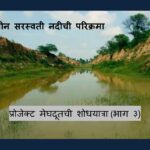They study galaxies, help predict landslides: Meet India’s citizen scientists
Average people — school students, engineers, retired bankers — are helping gather data across the country, in fields as varied as astronomy and archaeology.
Updated: Apr 08, 2018 11:44 IST
Krutika Behrawala
Hindustan Times
(Part of the main article on Citizen Science in India)
Tracking landslides
For five years, Pune-based microbiology student Mitali Inamdar, 22, and nine other citizen scientists — including bankers, engineers and business consultants — have been contributing to an inventory of landslide-prone areas in Maharashtra. They have identified 169 hotspots so far, are these are being further divided on the basis of causes — landslides due to rock fall, mudflow or debris. Their study is part of the Satark landslide-warning project by the Pune-based Centre for Citizen Science (CCS).
The catalogue, co-related with satellite imagery, is used to issue alerts in regions susceptible to landslides. “Citizen scientists are needed for this project because satellite images alone are not enough. On-ground support provides greater accuracy,” says CCS secretary Mayuresh Prabhune.
For this project, the scientists travel to far-flung villages to collect soil samples, take readings of wind velocity, and interview locals. “It’s hard work, but it’s worth it,” says Nitin Tamhankar, 38, a banker from Pune who uses most of his leave to work on the project. “It’s gratifying to know that our contributions could help save lives,” Inamdar adds.

Over the past three years, estimates based on their data have been used to issue alerts in the hilly Malshej Ghat and Lonavala-Khandala regions of the state. “On days of high rainfall, the team co-related the rainfall intensity in the regions and shared information with us, indicating high probability of landslides there. It helped us issue advisories to corresponding district collectors,” says Suhas Diwase, collector of Bhandara district and former director of Maharashtra’s disaster management cell.
A research paper based on their data is also in the works. “It will be a first-of-its-kind inventory in India,” says meteorologist Jeevanprakash Kulkarni, a member of the World Meteorological Organisation (WMO) and retired scientist from the Indian Institute of Tropical Meteorology, and now vice-president of CCS.









Leave a Reply